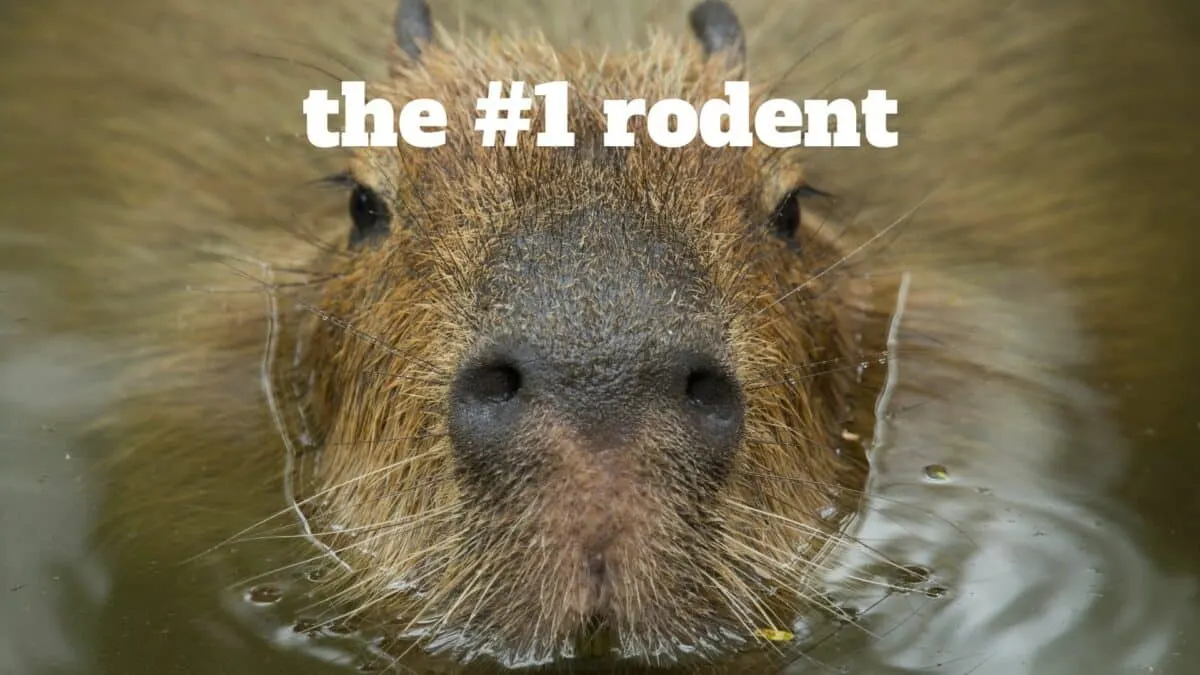The largest rodent in the world is the Capybara, and I’d like to contend that it’s also the cutest one.
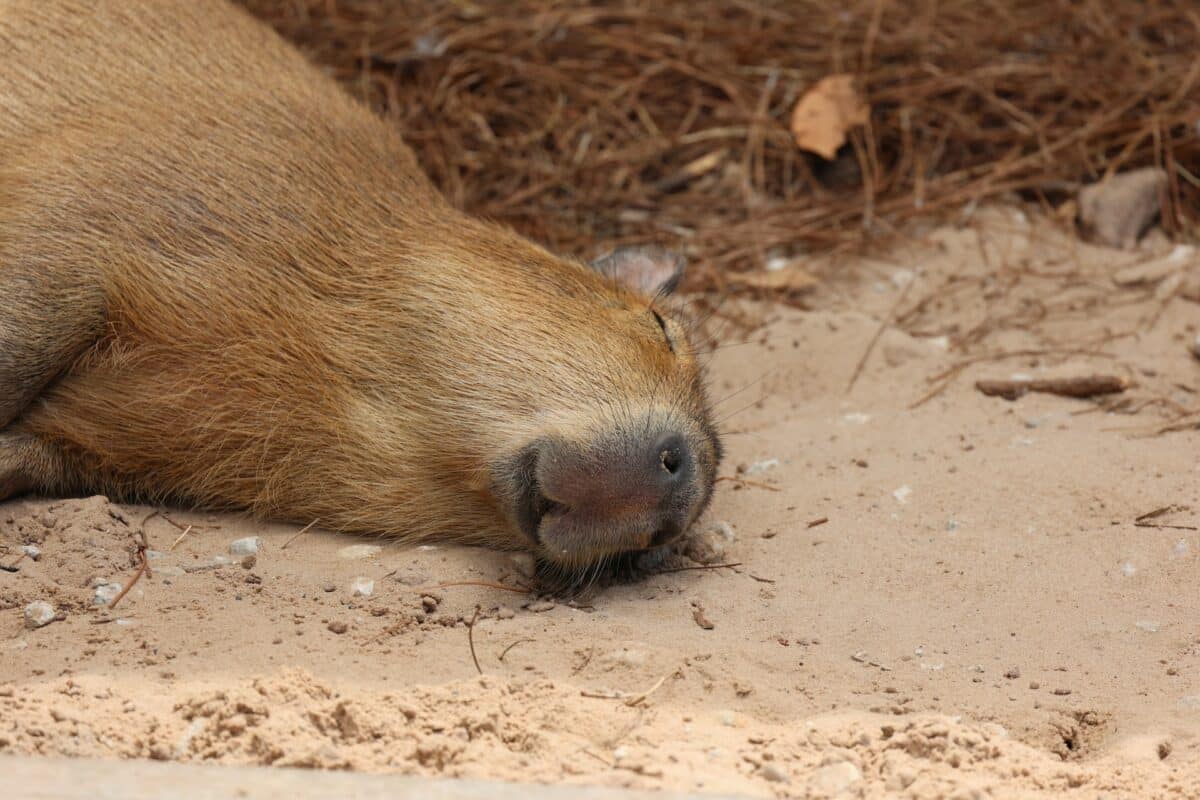
A colossal creature roams in a hidden corner of South America’s lush rainforests, where whispers of legends and natural wonders intertwine, challenging our preconceptions of the animal kingdom. Prepare to be astounded as we embark on an extraordinary journey to unveil the world’s largest rodent—the magnificent Capybara.
With a commanding presence and a gentle demeanor, this remarkable creature shatters stereotypes with its size and defies expectations with its endearing qualities. Join us as we dive into the captivating world of the Capybara, unlocking the secrets of its colossal proportions and unraveling the captivating tapestry of its existence in the intricate fabric of the animal kingdom.
A Brief Introduction
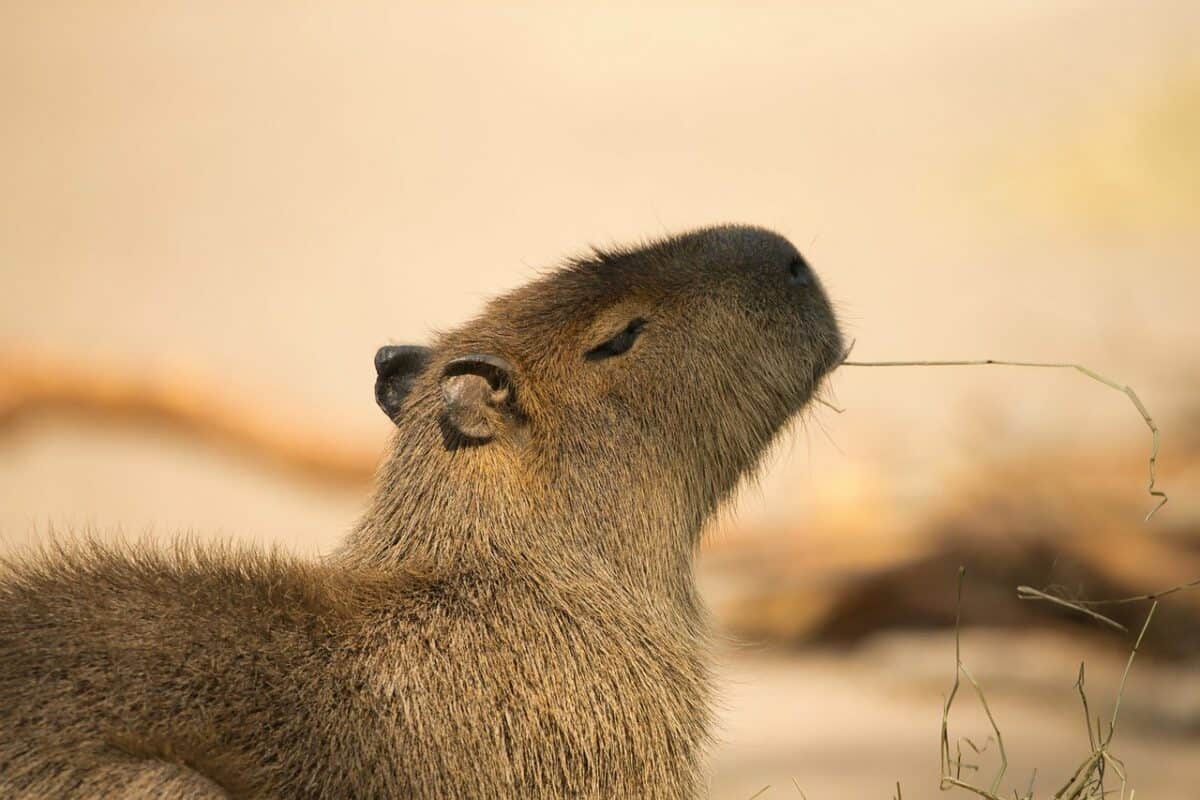
| Attribute | Description |
|---|---|
| Length | 3.9 to 4.9 feet |
| Weight | 77 to 146 pounds |
| Special Adaptations | Webbed feet for swimming and grazing at water’s edge |
| Diet | Herbivorous, mainly grasses, aquatic plants, and fruits |
| Habitat | Wetlands, swamps, and grassy areas near water bodies |
| Predators | Jaguars, anacondas, caimans, and large birds of prey |
| Social Behavior | Highly social, forming groups called “herds” or “capybara communities” |
| Lifespan | 8 to 10 years in the wild, up to 12 years in captivity |
| Conservation Status | Least Concern (IUCN Red List) |
Origin and Background
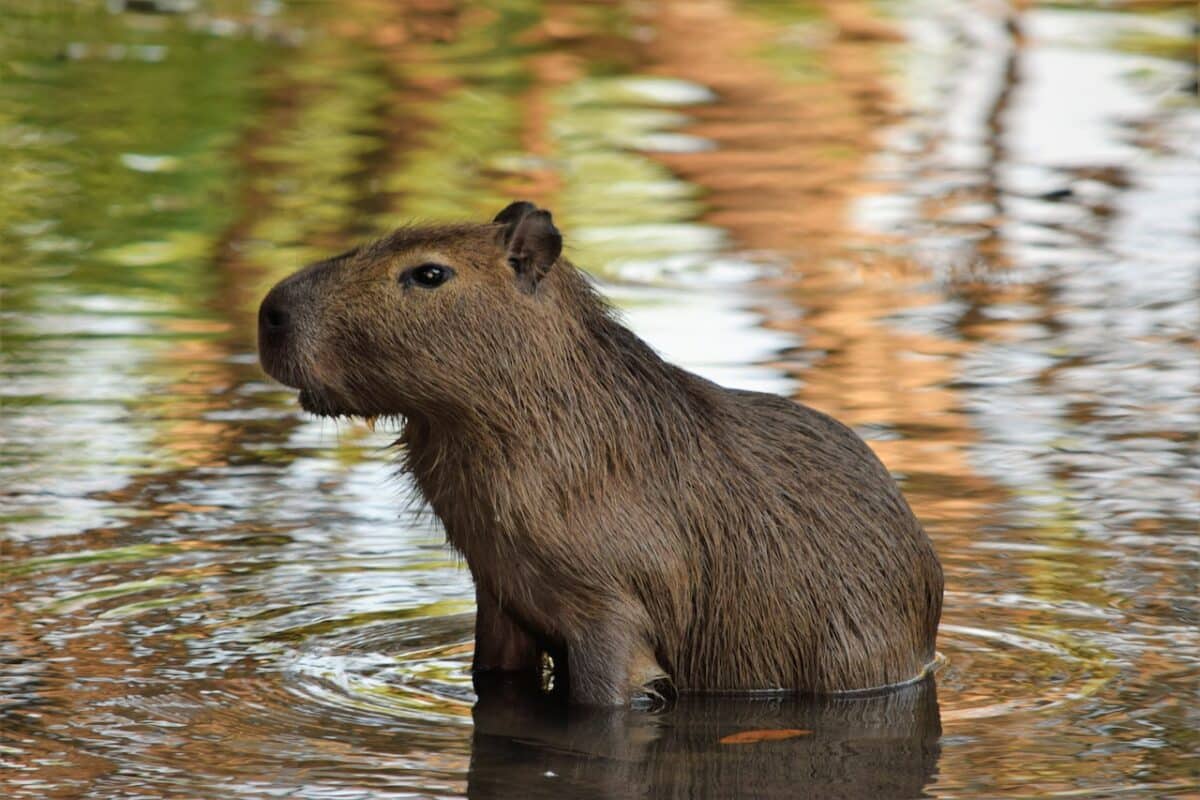
The Capybara (Hydrochoerus hydrochaeris) is the largest living rodent in the world. It is a semi-aquatic mammal native to South America and is closely related to guinea pigs, rock cavies, and other rodents. The name “capybara” comes from the Tupi language, spoken by indigenous people in Brazil, and means “master of the grasses.” Capybaras have a robust and barrel-shaped body with a flat head, short snout, and small ears. They have slightly webbed feet and a dense, bristly coat that varies from reddish-brown to grayish-brown.
These creatures are native to the grasslands, marshes, and forests of South America, including countries such as Brazil, Venezuela, Colombia, and Argentina. They have adapted well to terrestrial and aquatic habitats, with their webbed feet aiding in swimming and diving. Capybaras are highly social animals and live in large groups called herds or colonies, consisting of up to 20 individuals.
Due to their gentle nature and friendly disposition, capybaras are sometimes kept as pets in certain parts of the world. They are known for their sociability and have been observed forming bonds with other species, including birds and even caimans (a type of crocodilian).
Physical Characteristics
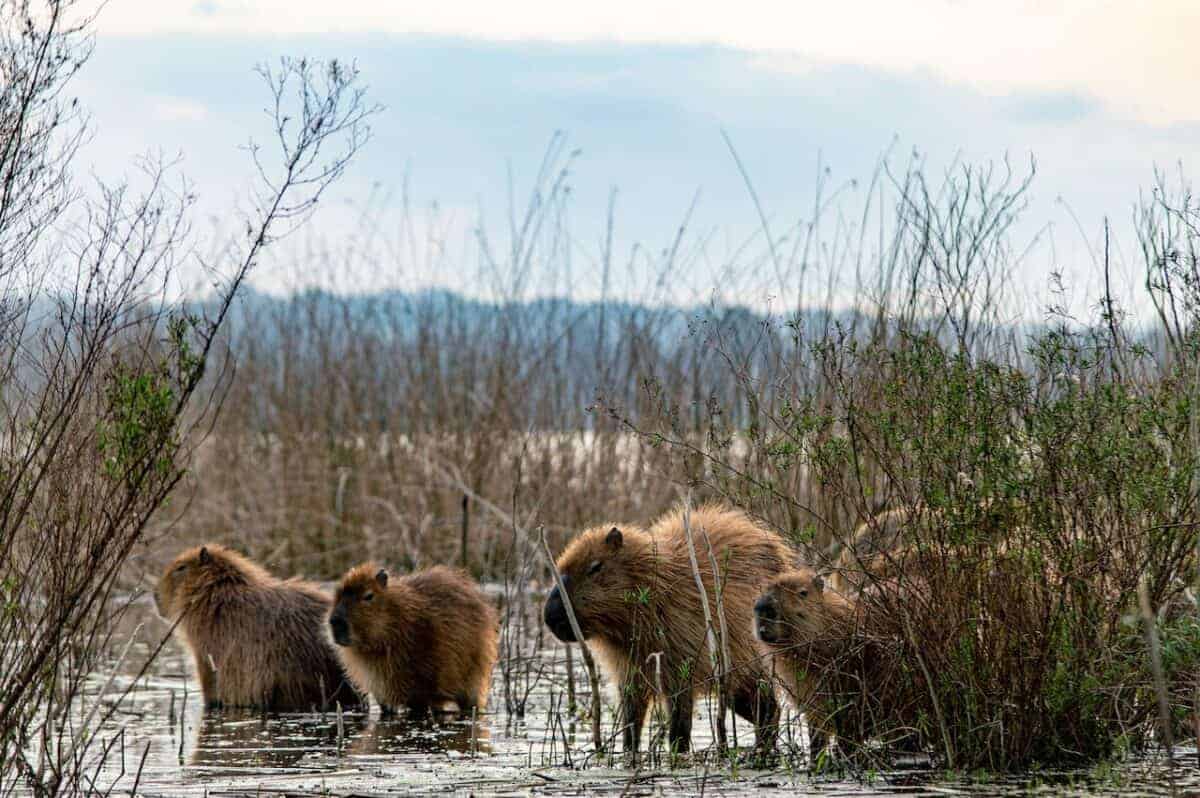
Capybara has captured the fascination of animal enthusiasts around the world. In this piece, we will delve into the physical characteristics of the Capybara, exploring its unique features and its role in its survival.
Size and Weight
The Capybara is the world’s largest rodent, measuring up to 4.3 feet (1.3 meters) in length and weighing up to 145 pounds (66 kg.) Despite its size, the Capybara is a skilled swimmer, able to hold its breath for up to five minutes as it dives into the water to forage for food.
Unique Physical Features
One of the Capybara’s most fascinating features is its webbed feet. These adaptations help the creature move more efficiently in the water, propelling itself forward with each stroke. Additionally, the Capybara’s eyes are positioned on the top of its head, giving it a unique vantage point of its surroundings and allowing it to spot predators from great distances.
Thick Fur
The Capybara’s thick fur is another remarkable feature crucial to its survival. The fur provides insulation against the elements, helping the Capybara regulate its body temperature in the often-sweltering rainforest environment. This adaptation allows the Capybara to maintain a constant body temperature regardless of external conditions.
Habitat and Behavior
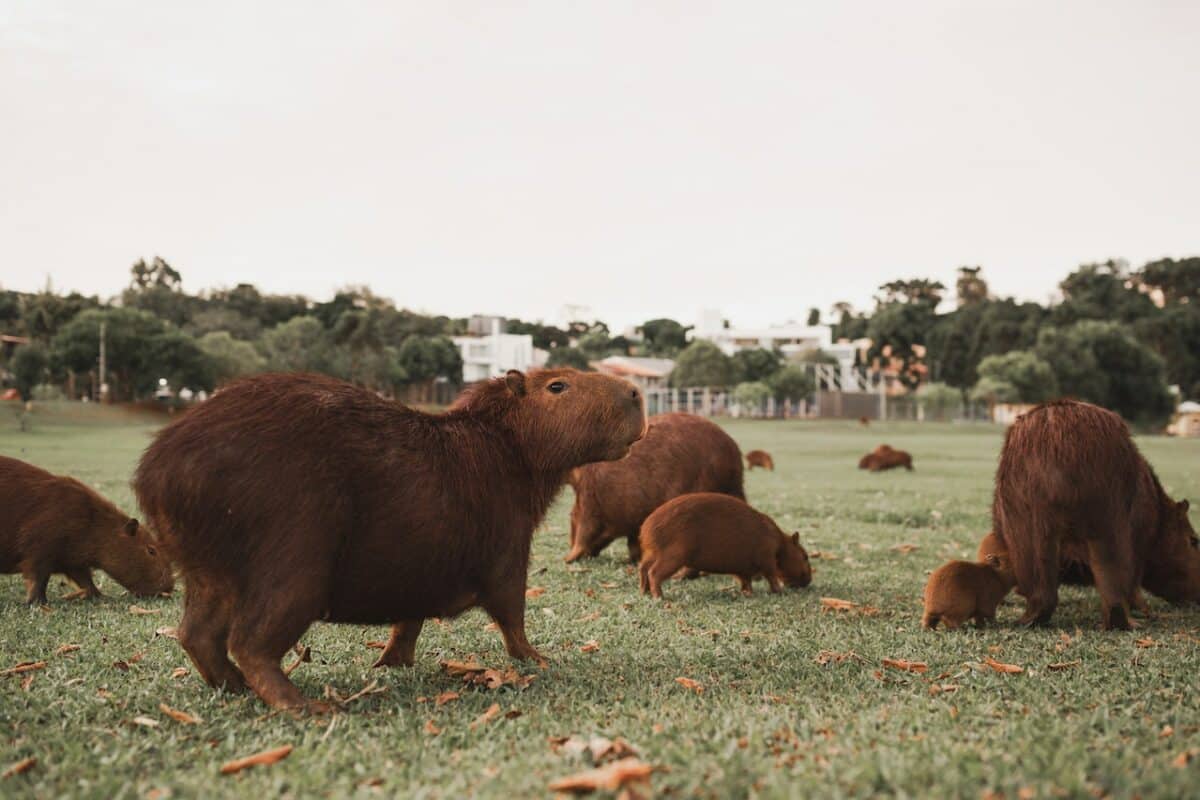
This fascinating animal’s preferred habitats are typically found near water, such as streams, rivers, and swamps, where they can easily swim and forage. Their adaptation skills are impressive, as they have evolved to thrive in various environments. Capybaras are incredibly adaptable animals, which allows them to survive in varied ecosystems, from tropical rainforests to grasslands. They can adapt to various habitats and withstand brief periods of drought.
Social Behavior and Communal Living
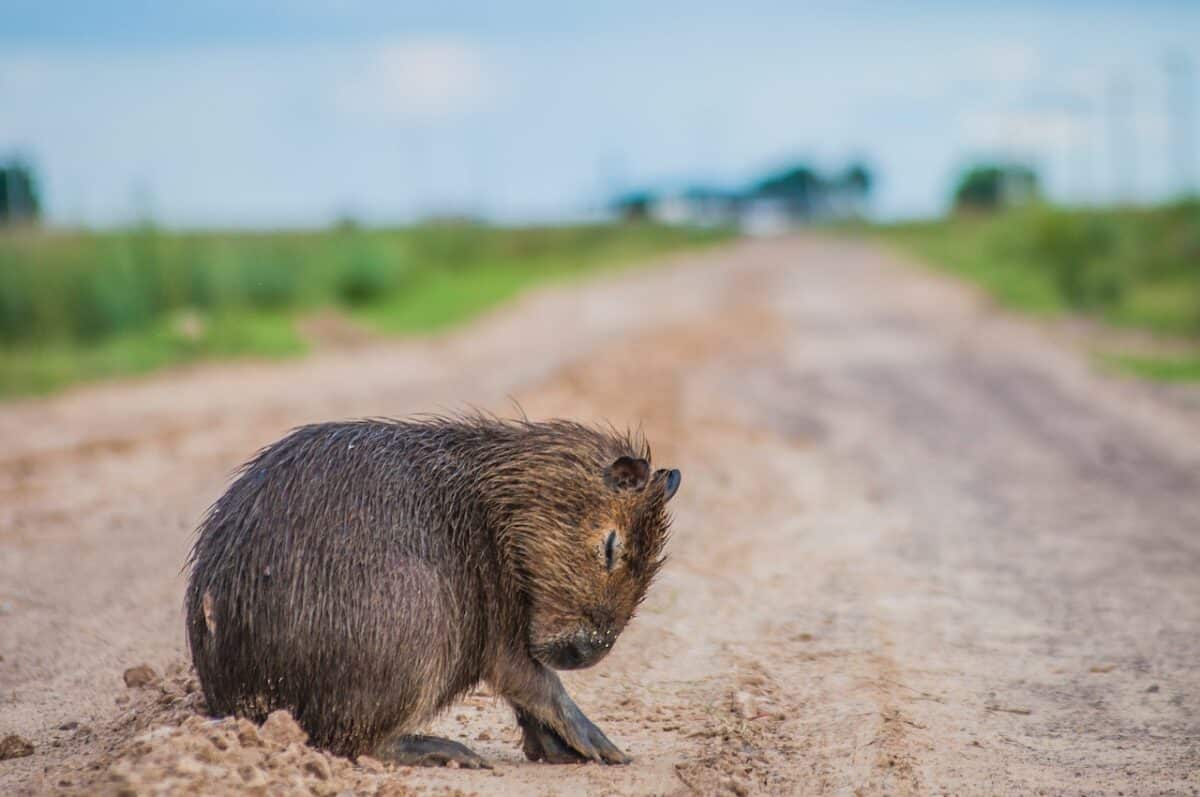
Capybaras are social creatures that live in large groups of up to twenty individuals. This species of rodents are highly sociable, living in large family groups of adults, juveniles, and offspring. They maintain their group dynamics through vocalizations, scent marking, and grooming.
This animal’s communal living is remarkable and underscores its adaptability. It allows them to protect themselves from predators better and share knowledge about their environment. Often, groups of capybaras hang out in the water, grooming one another in the sun.
Herbivorous Diet
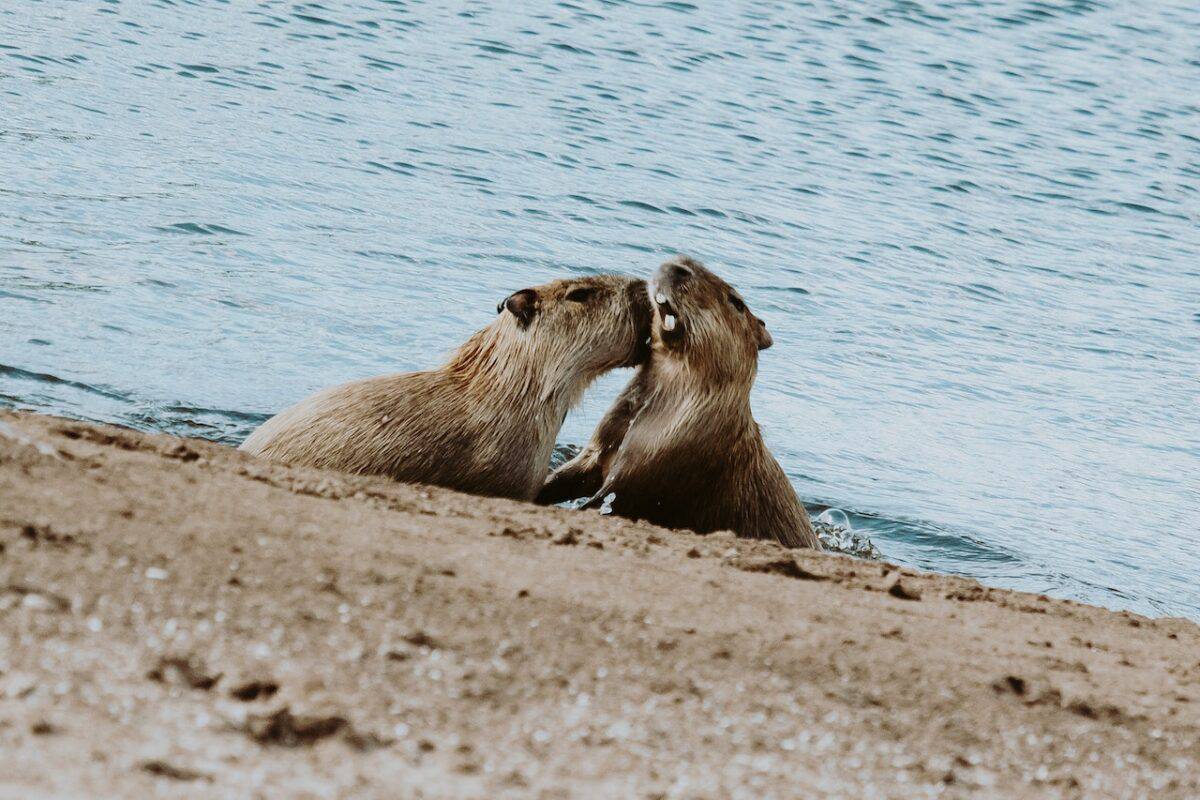
Capybaras are herbivorous animals, which means that over 90% of their diet consists of plant material. Their preferred plant foods include aquatic plants, such as duckweed, cattails, and various grasses.
This herbivorous diet impacts their behavior. Their digestive system is specially adapted for breaking down fibrous vegetation, meaning they spend a lot of time grazing and processing food. Capybaras are also crepuscular animals, meaning they are most active during dusk and dawn, spending the rest of their time sleeping or resting.
Significance In the Animal Kingdom
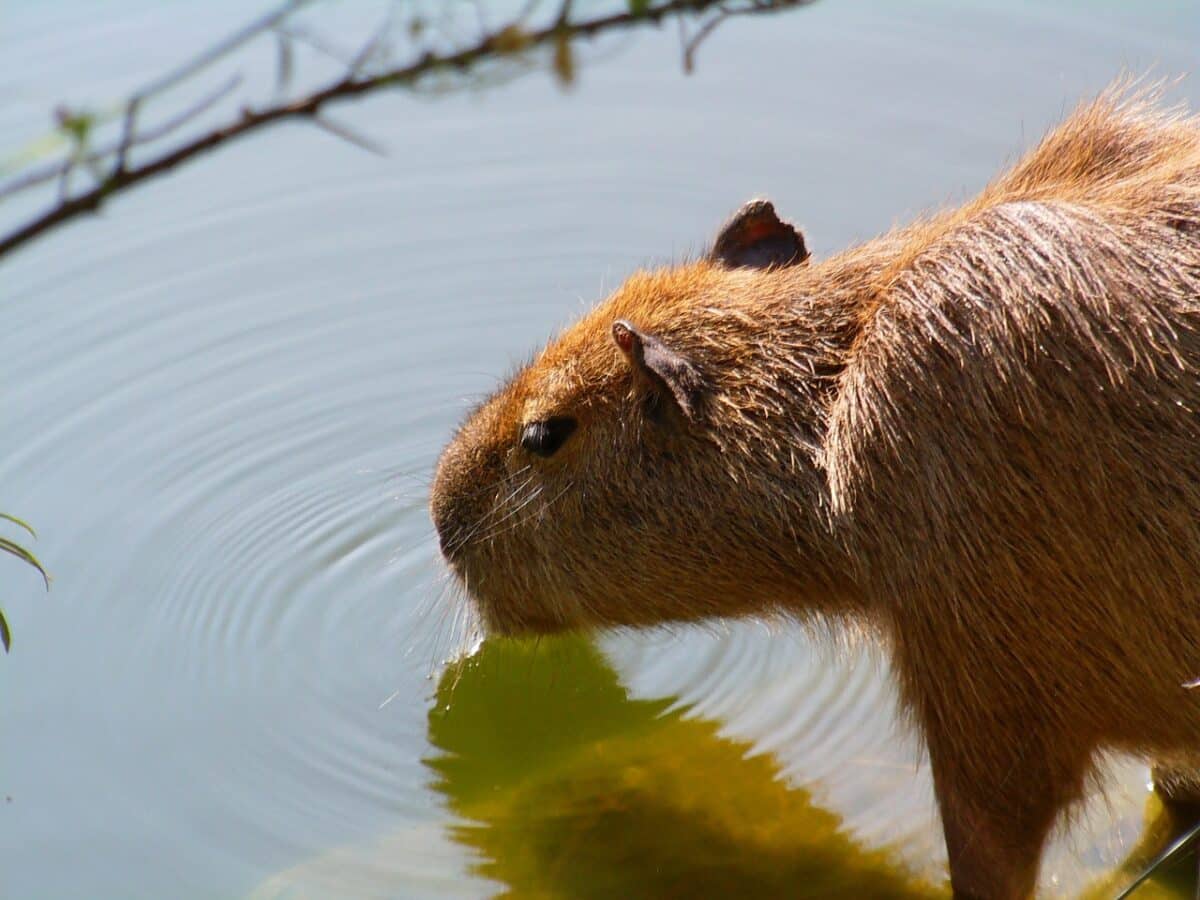
The Capybara plays a crucial role in its ecosystem, not just as a herbivore but also as a prey species. Due to their large size, predators such as anacondas, jaguars, and caimans often target Capybaras. The diverse mix of predators and prey in the rainforests ensures that the ecosystem remains balanced, and the Capybara plays a vital part in this dynamic.
Another essential aspect of the Capybara’s significance in the animal kingdom is its unique physiology. The Capybara has a large cecum in its digestive system that ferments cellulose, breaking it down into simpler nutrients that their bodies can absorb. This adaptation enables the Capybara to survive on a diet of tough plant material, and it has also made it a subject of interest for research into cellulose fermentation.
Threats To Capybaras’ Population and Their Habitat
As the world’s largest rodent, the Capybara is a vital component of its ecosystem, playing a crucial role in maintaining a healthy balance. Sadly, this adorable creature faces several threats to its population and habitat. In this piece, we will explore the challenges faced by the Capybara and the conservation efforts in place to protect it.
Deforestation
The rapid loss of the Capybara’s natural habitat to deforestation is one of today’s most significant threats. Clearing of forests destroys the ecosystem, leaving the Capybara without good grazing areas, shelter and hiding places, and water bodies.
Hunting
Despite being protected in many areas, Capybaras remain a target for hunters, with their meat being a delicacy for many people. Unregulated hunting has led to a significant decline in the Capybara population.
Climate Change
Changes in weather patterns, severe weather conditions such as droughts, heavy rains, floods, and rising temperatures sparked by climate change, impact all wildlife – and the Capybara is not exempt.
Conservation Efforts For the Capybara and Its Ecosystem
The conservation efforts for the Capybara and its ecosystem are vital to preserving this species. Here are some projects in place to protect the Capybara population:
Habitat Restoration
Through collaborative efforts, organizations are taking steps to help restore habitats impacted by deforestation. These organizations are investing resources into developing protected nature reserves and raising public awareness about the adverse effects of deforestation.
Hunting Regulations
Governments worldwide are working to regulate hunting and trade in Capybaras, reducing the number of hunted and traded.
Climate Change Mitigation
Climate change mitigation strategies such as reducing greenhouse gas emissions are essential in ensuring the Capybara and other wildlife continue to thrive in the natural habitat.
FAQs
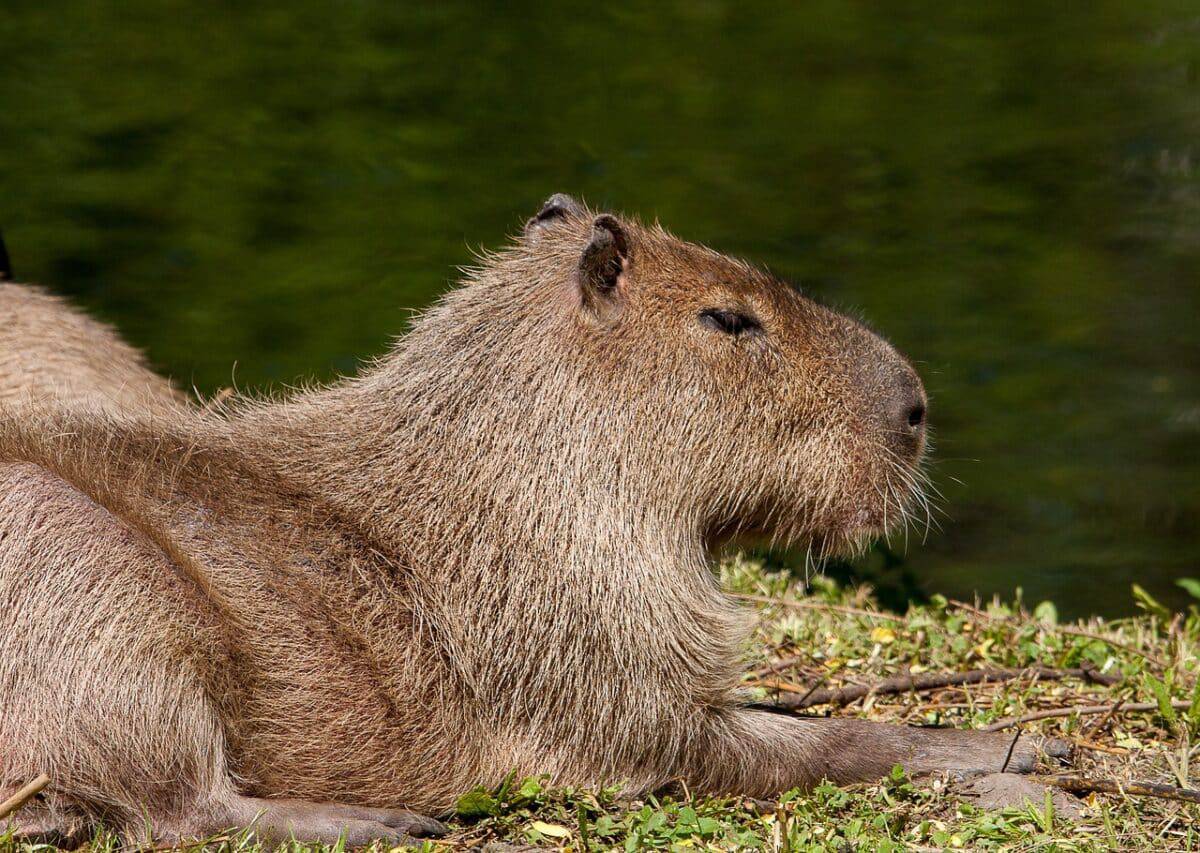
No, capybaras do not live in Africa. They are native to South America.
Capybaras are generally known for their friendly and social nature. They are often seen interacting peacefully with other animals and even humans. However, it’s important to approach them with caution and respect their space, as with any wild animal.
In recent years, capybaras have gained fame due to their adorable and somewhat funny-looking appearance. They’ve become a viral sensation, and there’s an abundance of photos, memes, and videos that get millions of views on social media.
The general peaceful relationship between Crocodiles and Capybaras is somewhat of a mystery, but it is believed that the crocodile refrains from eating them because they are too big to swallow.
Conclusion
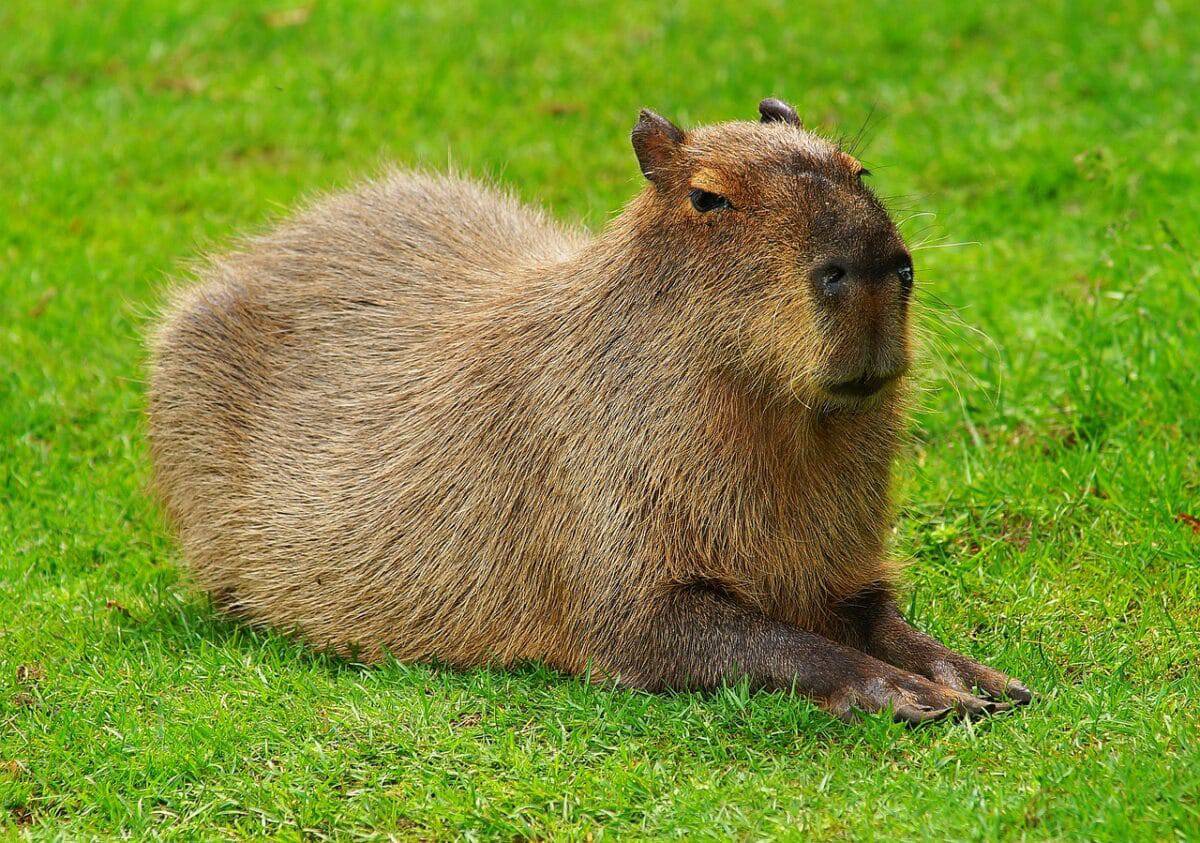
The Capybara is a fascinating and unique creature in the heart of South America’s lush rainforests. Its commanding presence and gentle demeanor challenge our preconceptions of the animal kingdom, and its colossal size defies stereotypes.
Throughout the journey, we’ve uncovered the many secrets of the Capybaras’ existence, from its intriguing behavioral patterns to its endearing qualities that make it one of the most beloved animals in South America – if not the world. The Capybara is a true testament to the diversity and complexity of the animal kingdom and serves as a reminder of the wonders within the natural world.
Thank you for reading this article about the largest (and cutest) rodent in the world! Get your hands on more rodent content here:
- Doberman Dog Mom Protecting Her Puppies From Dad - May 8, 2024
- Cat Scares Coyotes and Saves Her Dog Sister From an Attack - May 7, 2024
- Pet Panther Jumps Into Bed To Get Cuddles - May 7, 2024

